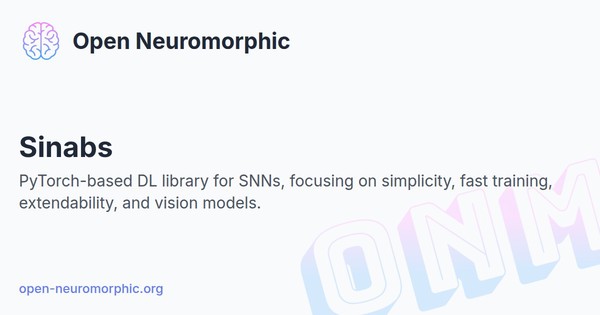Overview
Sinabs (Sinabs Is Not A Brain Simulator) is a deep learning library based on PyTorch, specifically designed for spiking neural networks. It focuses on simplicity, fast training,
and extendability, demonstrating particularly strong performance with vision models due to its support for weight transfer. The library provides users with an efficient way to convert
existing artificial neural networks into spiking neural networks. Its tutorials cover various processes, such as converting an existing ANN or running examples using Backpropagation
Through Time (BPTT) with neuromorphic versions of datasets like MNIST.
Sinabs is also equipped with plugins to enhance its functionality, including deploying models to neuromorphic hardware and significantly speeding up the training of feed-forward models.
The API reference offers a comprehensive overview of the supported neuron models, the weight transfer API, and other features. The documentation provides insights into getting
started with Sinabs, whether you’re exploring the syntax of spiking neural networks or looking to adapt existing neural networks into spiking networks. It is particularly noted for
its collaboration with other tools like Rockpool for different types of data or backend needs. Sinabs encourages community engagement with clear contribution guidelines and is
maintained by SynSense.


